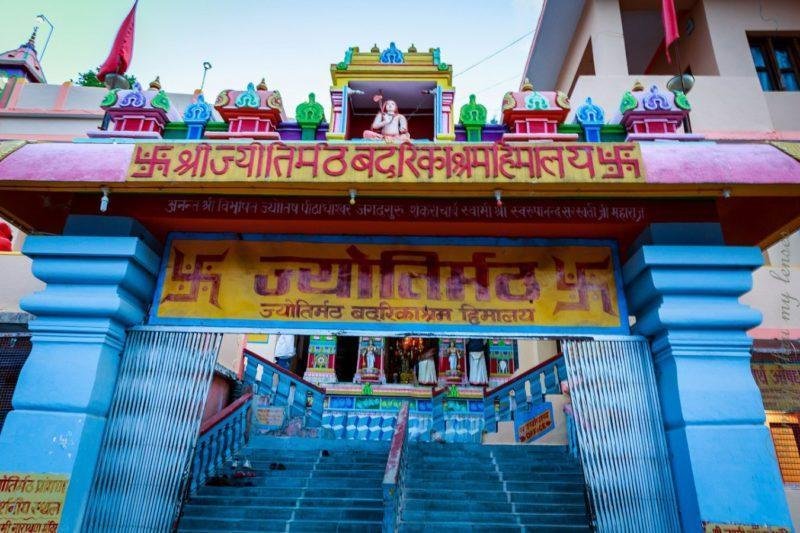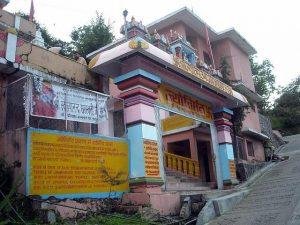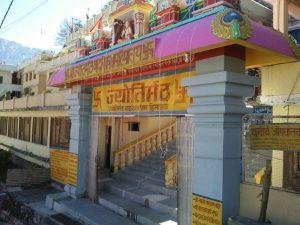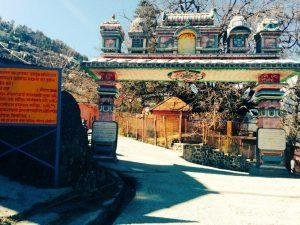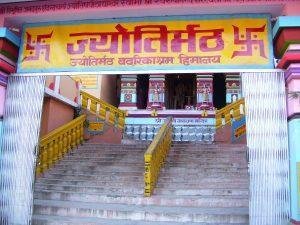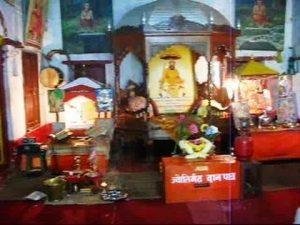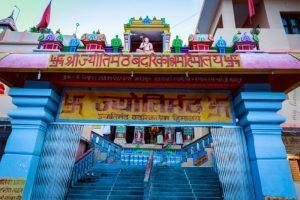Jyotirmath, Chamoli, Uttarakhand
| Date built: | – |
|---|---|
| Deity: | – |
| Architectural style: | – |
| Major festivals | – |
| Locale: | – |
| District:: | Chamoli |
| Address: | – |
| Phone | – |
Jyotirmath, also known as Joshimath is a city and a municipal board in Chamoli District in the Indian state of Uttarakhand. Located at a height of 6150 feet (1875 m), it is gateway to several Himalayan mountain climbing expeditions, trekking trails and pilgrim centres like Badrinath. It is home to one of the four cardinal pīthas established by Adi Shankara.
Shankaracharya Math is the math established by Adi Shankaracharya in North India. The Math is having a temple of Badrinarayan and Rajrajeshwari Devi. It has a sacred cave where Adi Shankaracharya supposedly undertook Tapasya.
Narsinh Temple is an ancient temple of Lord Vishnu in Narsinh Avtar and main temple of Joshimath. It has an idol of Lord Narsinh, which is considered established by Shankaracharya. As per local belief, the right hand of this idol has become as thin as a hair. On the day when it will break, the mountains Jay-Vijay shall become one and Lord Badrinath of Badrinath temple will disappear from the present temple and re-appear as black stone (Shaligram) at a new place called Bhavishya Badri, which is situated at a distance of 10 km from Joshimath.
Bhavishya Kedar Temple is the place as per local belief where disappeared Kedarnath along with Badrinath will re-appear. This temple has a small shivling.Tapovan is situated 10 km from Joshimath. It has natural hot water springs. It has a nice view of river Dhauliganga.
Architecture
Jyotirmath, also known as Joshimath is a city and a municipal board in Chamoli District in the Indian state of Uttarakhand. It is located at a height of 6150 feet. It is a gateway to several Himalayan mountain climbing expeditions, trekking trails and pilgrim centres like Badrinath. It is a home to one of the four cardinal pithas established by Adi Shankara.
Jyotirmath is the uttaramnaya matha or northern monastery, one of the four cardinal institutions established by Adi Shankara, the others being those at Shringeri, Puri and Dwarka. Their heads are titled “Shankaracharya”. They are considered to be the leaders of the ten orders of the Dasanami Sannyasins associated with Advaita Vedanta. The principal eastern (Purvamnaya), southern (Dakshinamnaya) and western (Pascimamnaya) institutions are based at Puri (Orissa), Sringeri (Karnataka) and Dwaraka (Gujarat) respectively. The northern (Uttaramnaya) Sankaracharya seat is at Jyotirmath (also known as Joshimath) near Badrinath. In addition to these four, there are numerous other mathas throughout India, and the seven Dasanami Akhadas (Juna, Niranjani, Mahanirvani, Ananda, Atal, Avahan, Agni – the last is a Brahmacharin Akhada, not a Sannyasin one) that have their own separate administrations and leaders. According to the tradition initiated by Adi Shankara, this matha is in charge of the Atharva veda. Jyotirmath is close to the pilgrimage town of Badrinath. This place can be a base station for travellers going to Guru Gobind Ghat or the Valley of Flowers National Park. The temple Narasimha is enshrined Badrinarayan along with a pantheon of deities. The presiding deity Lord Narasimha is believed to have been established by Adi Sankara. It is one of the Divya Desams, the 108 temples of Vishnu revered by the 12 Tamil poet-saints or Alvars.
Legend / Local stories
The history of Jyotirmath is extremely complicated. According to official accounts, after the period of one Swami Ramakrishna Tirtha in the 18th century, the matha was extinct for about 165 years, before it was revived in 1941, under Swami Brahmananda Saraswati. However, in the meantime, various Sannyasins had claimed to be the Sankaracharya of Jyotirmath, and for some time, many people thought that the Rawal (head-priest) of the Badrinath temple was also the Sankaracharya of Jyotirmath.
Between 7th and 11th centuries C.E., Katyuri kings, who were originally from Joshimath, ruled the area of varying extent from their capital at “Katyur” (modern day Baijnath) valley in Kumaon, including from Brahmadev Mandi in Nepal in the east to Kabul in Afghanistan in the west, before fragmenting into numerous principalities by the 12th century.The Katyuri dynasty was founded by Vashudev Katyuri, ancient Basdeo temple at Joshimath is attributed to Vasu Dev. Vasu Dev was of Buddhist origin, but later followed Brahminical practices and the brahminical practices of Katyuri kings in general is sometimes attributed to a vigorous campaign of Adi Shankara (788-820 CE).
Katyuri kings were displaced by the Chand Kings in the 11th century AD
Photo Gallery
How to Reach:
Contact Details
Official Address

